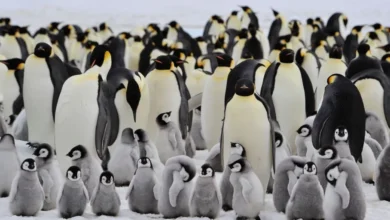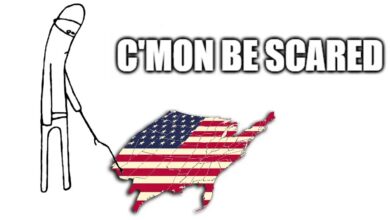Gas Furnaces and Big Brother Revisited – Watts Up With That?

By Mark Krebs — November 3, 2022
“The fantasy, the shared narrative, is that replacing natural gas with electricity addresses the ‘climate crisis’ … Coupled with smart meters and digital currency, the home and business are subject to social monitoring and control. This is a high-tech version of F. A. Hayek’s the road to serfdom.”
On October 11, 2022, Gas Furnaces: Big Brother Says No highlighted the joint comments filed by the Competitive Enterprise Institute (CEI) et al. [1] These comments were in opposition to the Department of Energy (DOE) Office of Energy Efficiency & Renewable Energy (EERE) and their (severely overreaching) “Notice of Proposed Rulemaking” (NOPR) to ban the manufacturing of gas-fueled residential furnaces: “Energy Conservation Program for Consumer Products.”
CEI et al.’s comments primarily highlighted how DOE/EERE is attempting to justify its proposed ban based upon improper use of the Social Cost of Carbon (SCC): “2022-10-05 Joint Comment response to the published NOPR.”
Several hundred comments were filed. This post highlights a few more comments filed in opposing this NOPR, including my own: “2022-10-06 Comment response to the published NOPR.” Some of the comments reviewed here were submitted by free-market advocates and some from gas/consumer interests.
The types of furnaces that would be eliminated under the EERE’s proposal are the very common non-weatherized gas furnaces and mobile home gas furnaces that are atmospherically vented (a.k.a., “non-condensing”) and used in most existing homes. By mandating a minimum gas-furnace efficiency of 95 percent, EERE’s proposal would force consumers to replace furnace combustion exhaust systems, because such efficiences can be safely met only by totally different venting systems designed to handle internal condensation.
Better Coordination Needed
There is a great need to better coordinate the voices of unhampered consumer choice against the “clean” electricity monoculture. In particular:
- Gas and consumer interest need to understand and emphasize how DOE/EERE has its fingers on the scale regarding claimed climate benefits; also,
- Free-market commenters need to understand and expose how DOE/EERE also has fingers on the scale by gaming the complex models used to calculate benefits
Together, DOE/EERE has its fists on the scale and is pressing down hard with its full body weight to eliminate gas. Cheating is cheating, and both factions of DOE/EERE’s opposition must fight with the full force of both arguments simultaneously.
Background
The fantasy, the shared environmental narrative, is that replacing natural gas with electricity addresses the “climate crisis.” When coupled with smart meters and digital currency, homes and businesses will be subject to social monitoring and control. This is a high-tech version of F. A. Hayek’s the road to serfdom. (See “The Cloward-Piven Strategy: Orchestrating A Crisis So Government Can ‘Solve’ It.”)
In case you think this sounds paranoid, it’s a thin line separating paranoia from an acute appreciation. Some people thought the threat of government-forced electrification was “paranoid” a few years ago. Now, under the Biden Administration, electrification is national energy policy. Additionally, the environmentalists are clamoring for Biden to declare a “climate emergency.” If so, the road to serfdom could become a digital superhighway.
Other Comments
Here are coments from other pro-consumer, pro-market sources:
Heritage Foundation
Heritage summarized its comments with the following outline:
- The proposed standard modification does not meet the “economically justified” criteria for prescribing new or amended standards;
- The so-called social cost of greenhouse gases obscures regulatory costs;
- The proposed standard unjustifiably reduces consumer choice;
- The proposed standards are unnecessary given the wide availability of condensing furnaces and their existing market penetration; and
- The proposed standard does not meaningfully fulfill the intent of the Energy Policy and Conservation Act.
Perhaps Heritage’s most noteworthy comments relate to point 5 and the Congressional intent behind the 1975 Energy Policy and Conservation Act (EPCA), which establishes DOE/EERE regulatory authority to set minimum appliance efficiency standards. Here are some teasers to read Heritage’s comments in full:
What [sic] the Department does provide analysis of the impact on competition, it seems not to appreciate the positive benefit that having both types of furnaces will have on long term market dynamics. As the White House published on July 9, 2021, “Healthy market competition is fundamental to a well-functioning U.S. economy.” It goes on to point out that insufficient competition will lead to higher prices and lower quality and argues that one of the causes of this condition is too much market concentration.
Unfortunately, should this rule be finalized, it will lead to the precise market conditions that the White House seems to be arguing against. Though the White House analysis focuses on market concentration regarding firms, technology concentration is just as detrimental.
In removing an entire technology from the market, this rule would limit the incentive for condensing furnace manufacturers to lower prices, or even to increase efficiency further, because the regulation will have captured a substantial portion of the market for them. Indeed, absent the countervailing force of competition, the more likely outcome will be for condensing furnace manufactures to increase prices.
Heritage’s NOPR comment says nothing about the elimination of competition from electrification. To be fair, and for whatever reason, most free-market entities don’t challenge the electric utility industry. I’m not sure why. (Perhaps they will tell me.) For more information, see Spire to DOJ letter.
Regardless, the Heritage Foundation deserves considerable credit for their comments and the fine public education webinars they host regularly. For example, on October 12th, Heritage provided a webinar titled “The Politics of Climate Change” (here). Considerable discussion was given to the subject of “The Great Reset” (mainly by Marc Romano), of which the forced transition from the direct use of gaseous fuels to electricity is a major part. Check it out; you won’t be disappointed.
Heartland Institute
Heartland’s comments start with a discussion of adverse impacts upon low-income energy consumers. Its strongest case is that the DOE/EERE proposal is just plain unnecessary. Per the following paragraph from Heartland’s comments:
Heartland also contends that this rule is unnecessary. Today, condensing furnaces are readily available and have already captured more than half the market. Six in ten of the non-weatherized natural gas furnaces (NWGFs) shipped are condensing models. This trend in higher efficiency furnace purchases demonstrates that the proposed new standards are needless.
Stark regional impact differences show in northern states like Minnesota or Wisconsin, most residential natural gas furnaces already meet requirement of 95% annual fuel utilization efficiency (AFUE). Absent further action, DOE estimates that 91-95% of furnace replacements in these states will be at an AFUE of 92% or higher by the proposed effective date of the rule.
In southern states like Texas, Georgia, and Florida, consumers demand much less home heat, so a smaller percentage of homeowners have adopted higher efficiency furnace models. Where furnaces are used heavily, condensing models are installed, mitigating the need for this government mandate.
Like Heritage, Heartland also hosts numerous educational webinars on the falsity of a climate emergency.
American Gas Association (AGA) et.al. [2]
Moving on to gas utility comments and those of their trade associations: AGA comments concentrated on identifying the technical devils-in-the-details (a.k.a., “modelling cheats”) employed by DOE/EERE to demonstrate compliance with EPCA to claim net positive life-cycle benefits. Due to the sheer number of details with which to hide devils, AGA’s comments took 114 pages.
These were accompanied by attachments for nearly every letter of the alphabet. The reason for so much detail is to enable litigation. DOE/EERE is supposed to respond to all AGA’s comments come time to issue a Final Rule. And then, barring a highly unlikely backing down from DOE/EERE, comes a legal appeal under the Administrative Procedures Act. Then, all the details, along with whatever responses DOE/EERE musters, get their chance to appeal in court. This can take years.
Natural Propane Gas Association (NPGA)
NPGA’S 28-page contribution to the cause struck a good balance between modelling details and Congressional intent regarding EPCA. NPGA also provided unique insight regarding DOE/EERE misuse of Monte Carlo techniques. The following outlines NPGA’s 28 pages of comments:
- The Proposal Exceeds DOE’s Authority
- DOE’s Proposal Unlawfully Forces Fuel Switching.
- The Proposal Unlawfully Imposes “Design Requirements.”
- DOE’s Proposal Is Economically Unjustified.
- DOE’s Proposal Is Based Largely on Conjecture
- DOE’s Economic Model is Fatally Flawed.
- DOE’s “Random Assignment” Overstates the Proposal’s Benefits.
- DOE’s Use of Monte Carlo Analysis is Improper
- Failure to Provide a Separate Standard for Non-Condensing Furnaces Would Violate EPCA.
- The Proposal Fails to Take into Account Additional Burdens Related to Propane
NPGA’s comments did not directly address electrification.
Spire
Spire commented with 56 pages and three attachments. Comments were well constructed and covered much of the same territory as AGA and NPGA comments but also did not have much to say about climate science modelling. Perhaps Spire and the other gas industry commenters assumed (rightly as it turns out) that the free-market commenters would do so.
Spire’s comments also addressed upfront the “elephant in the room” of electrification. Good on Spire. With the help of computer software engineers, Spire dug deep into Monte Carlo models to identify precisely where and how DOE/EERE left its digital fingerprints on the scale. This data was summarized with numerous textual charts, tables and graphs. Again, this detail will come into full play when it is time to litigate.
Gas Analytic & Advocacy Services (GAS)
These comments were structured to provide an overview of DOE/EERE’s longstanding pattern of abuse without getting too deep in the technical weeds of climate or consumer economics. The rationale was that, when this goes to litigation, the court will see DOE/EERE’s pattern of abuse and not be so lenient by letting DOE/EERE off the hook with a remand.
The upshot of these comments is that the regulatory minimization of carbon emissions is being increasingly emphasized by DOE\EERE (despite EPCA) because reducing consumer energy expenses is decreasingly sufficent for justfying stringent appliance efficiency minimums. This transition is illustrated by the following graph:
“Electrification – What Does It Mean for Energy Efficiency?”
Another term for this transition is “mission creep.” Even the high hanging fruit has been picked clean and this transition will keep the bureaucrats employed for at least the next two decades. The following slides summarize the funding being directed towards this mission creep through the “Inflation Reduction Act.”
In addition to the commenters discussed above, there were several gas utilities who filed comments in opposition. Conversely, there were many electric utilities commending DOE/EERE’s proposal. Also present were a host of usual suspects: “energy efficiency” advocates, environmentalists, progressive regulators, etc.
Conclusions
Fighting DOE/EERE and their “preferred customers” is resource and time intensive. Case in point: the American Public Gas Association’s appeal to overturn a DOE/EERE Final Rule to eliminate non-condensing commercial boilers (reviewed here).
Since DOE/EERE is backed by the Department of Justice, their legal budget is virtually unlimited. And now, “net zero” zealots have a $40+ billion slush fund with which to push their political agendas under the guise of an existential threat of anthropogenic global warming (AGW). It is a safe bet that this NOPR will lead to a Final Rule and that it will be appealed.
So far, Spire and the APGA have been picking up the tab. Whether they know it or not, they could use some additional help; especially from free-market oriented economists and scientists. After all, united we stand and divided we fall.
Appendix: Why and How to Unite
As demonstrated by the filed comments of electric utility interests, environmentalists, and the mutual support pact between Edison Electric Institute and NRDC, these “stakeholders” are clearly aligned and proceeding accordingly. Consequently, it would behoove gas end-use and free market/consumer choice interests to also align.
They can start by better understanding the others’ filed concerns and adapting/adopting each other’s recurring themes going forward. For gas end-use interests, this entails boning-up on what remains largely unsettled science regarding the ostensible threats from anthropogenic global warming cultists and how these factors are being cherry-picked to game regulatory outcomes through mechanisms such as the social cost of carbon (SCC).
For free market/consumer choice interests, this means better understanding that gaseous fuels represent the main obstacle to increasingly “betting the farm” on the false hope of an “all renewables, all the time” nirvana while also venturing into the technical weeds of regulatory processes and rules that allow for appeal. Then, coalitions between these groups can be formed and act to better protect the interests of the besieged American consumer.
Consumers also have a role to play. They need to become better educated about energy. Considering how besieged consumers are by the many failings of the Biden Administration, getting this message heard above the din will require increased and continued efforts. Winning this contest for grabbing consumers’ interest will not be served by pulling punches because someone doesn’t want to “trigger” opposing interests.
As Clausewitz once said: “A short jump is certainly easier than a long one; but no one wanting to get across a wide ditch would begin by jumping half-way.” Considering the depth and breadth of consumer indoctrination regarding AGW, the ditch is very wide. But at the same time, the ditch is largely illusionary and susceptive to logical/conservative means of bridging it that we can collectively bring to bear against sever regulatory overreach.
———————-
Mark Krebs, a mechanical engineer and energy policy consultant, has been involved with energy efficiency design and program evaluation for more than thirty years. He has served as an expert witness in dozens of State energy efficiency proceedings, has been an advisor to DOE and has submitted scores of Federal energy-efficiency filings.
His many MasterResource posts on natural gas vs. electricity and “Deep Decarbonization” federal policy can be found here. Mark’s first article was in the Public Utilities Fortnightly and titled “It’s a War Out There: A Gas Man Questions Electric Efficiency” (December 1996). For more of Krebs’s analysis, see his MasterResource archive.
Recently retired from Spire Inc., Krebs has formed an energy policy consultancy (Gas Analytic & Advocacy Services) with other veteran energy analysts.
[1] Consumers’ Research, Center for the American Experiment, JunkScience.com, Project 21, Caesar Rodney Institute, Rio Grande Foundation, Committee for a Constructive Tomorrow, FreedomWorks Foundation, Heartland Institute, Thomas Jefferson Institute, Independent Women’s Forum, Independent Women’s Voice, and Institute for Energy Research
[2] Signatories included: American Pipeline Contractors Association, American Public Gas Association, American Society of Gas Engineers, American Supply Association, Arkansas Gas Association, Consumer Energy Alliance, Distribution Contractors Association, Hearth, Patio & Barbecue Association, Hispanics in Energy, Louisiana Gas Association, Manufactured Housing Institute, National Apartment Association, National Association of Home Builders, National Leased Housing Association, National Multifamily Housing Council, National Propane Gas Association, National Utility Contractors Association, Natural Gas Supply Association, Northeast Gas Association, Plastics Pipe Institute, Plumbing-Heating-Cooling Contractors Association, Rinnai America Corporation, Thermo Products LLC, U.S. Chamber of Commerce, Utility Workers Union of America, AFL-CIO, and Williams Furnace Co. dba Williams Comfort Products or Williams.




